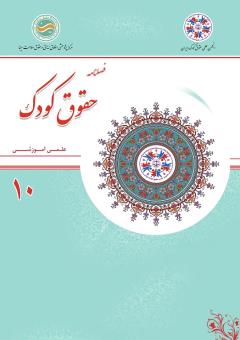گفتمان های حاکم بر کودکی و مطالعات کودکی: مروری بر جامعه ایرانی
محورهای موضوعی : حقوق کودک
1 - دانشکده علوم اجتماعی، دانشگاه تهران، تهران، ایران
کلید واژه: مطالعات کودکی, حقوق کودک, جامعه شناسی کودکی, گفتمان های کودکی,
چکیده مقاله :
زمینه و هدف: پژوهش حاضر به دنبال شناسایی گفتمان های مختلف در عرصه کودکی و مطالعات کودکی و همچنین کشف گفتمان غالب بر عرصه کودکی در جامعه ایران است. روش: این پژوهش با رویکرد کیفی و با روش تحلیل اسنادی انجام شده است. یافتهها: در این پژوهش، بعد از شناسایی گفتمان های مختلف در عرصه کودکی از منظر متفکران و متون مطرح در حوزه کودکی، به بررسی جامعه ایران پرداخته شده است؛ نتایج نشان می دهند که در جامعه ایران از بین سه گفتمان، نیازها، حقوق و کیفیت زندگی، در عرصه ی کودکی، گفتمان حقوقی مسلط است. بنابراین گفتمان غالب کودکی در جامعه ایران معاصر، گفتمان حقوقی است. نتیجهگیری: سلطه گفتمان حقوقی بر کودکی و مطالعات کودکی در ایران، منجر به ایجاد جبرهای ساختاری و مطالبات مردمی برای حمایت حقوقی بیشتر از کودکان شده است. مهمترین وضعیت ساختاری و کنشی در گفتمان حقوق کودک در ایران، شکل گیری ساختار مرجع ملی کنوانسیون حقوق کودک و گسترش انجمن های حمایت از کودکان و حقوق آن ها در ایران است.
Background and Aim: The current research seeks to identify different discourses in the field of childhood and childhood studies, as well as to discover the dominant discourse on the field of childhood in Iranian society. Method: The method of the research is qualitative and was done using document analysis. Results: In this research, after identifying different discourses in the field of childhood from the perspective of thinkers and texts in the field of childhood, the Iranian society have been investigated; The results show that in the Iranian society, among the three discourses, needs, law (legal) and quality of life, in the field of childhood, the legal discourse is dominant. Therefore, the dominant discourse of childhood in contemporary Iranian society is the legal discourse. Conclusion: The dominance of legal discourse on childhood and childhood studies in Iran has led to the creation of structural constraints and popular demands for more legal protection for children. The most important structural and active situation in the discourse of children's rights in Iran is the formation of the national authority of the Convention on the Rights of the Child and the expansion of associations for the protection of children and their rights.
1. Nash K. Contemporary Political Sociology, Globalization, Politics, Power. Translated by Delfrooz MT. 13th edition. Tehran: Kavir Publishing; 2015. [Persian]
2. Kehily MJ. An Introduction to Childhood Studies. Maidenhead, UK: Open University Press; 2008. p. 36-41; 281-282; 292- 298.
3. UN Declaration on the Rights of the Child. 1959. Availbe at: https://cpd.org.rs/wp-content/uploads/2017/11/1959-Declaration-of-the-Rights-of-the-Child.pdf
4. Lansdown G. Children’s Rights, in Mayall B. (ed.) Children’s Childhoods: Observed and Experienced, p. 33-44. London: Falmer Press; 1994.
5. Convention on the Rights of the Child. 1989. Availbe at: https://www.unicef.org/child-rights-convention
6. Woodhead M, et al. A survey of childhood studies. Translated by Ghani Z, et al. Tehran: Sociologists Publishing; 2018. [Persian]
7. Lansdown G. IT IS OUR WORLD TOO: A Report on the Lives of Disabled Children For the UN General Assembly Special Session on Children, Published on behalf of Rights for Disabled Children by Disability Awareness in Action. New York; 2001.
8. Lewis AC. The lives and thoughts of great sociologists. Translated by salasi M. Tehran: Scientific Publication; 2004. p. 33. [Persian]


